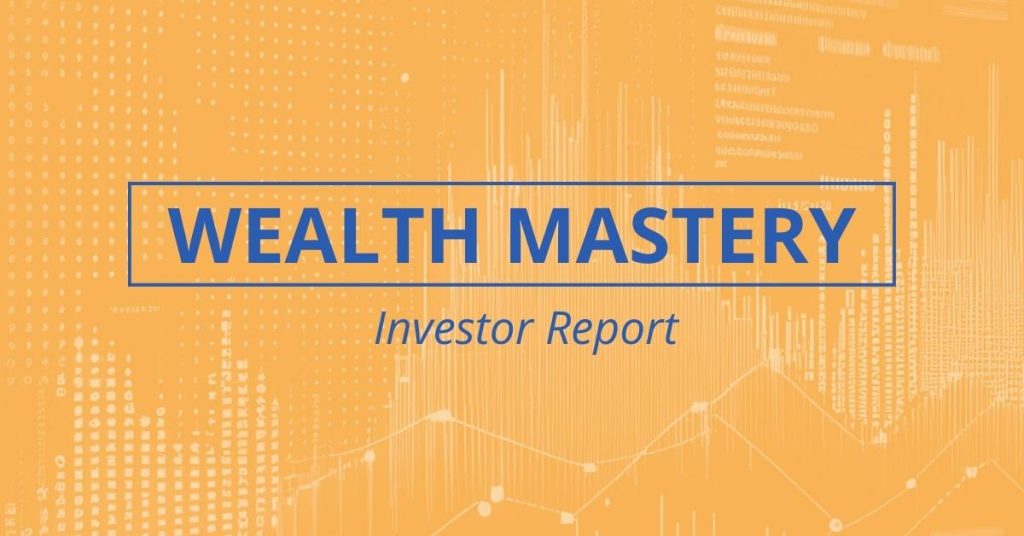Star Atlas AMA and Yield Aggregators – Wealth Mastery (BLACK FRIDAY SALE INSIDE)
Special Black Friday Announcement:
For the next five days, I have decided to slash the price of our premium membership.
Sign up now and save 33% off for your next three months.
If you are savvy with numbers, that’s a savings of $39…
Or $13 dollars a month…
Or…
A FREE month of Wealth Mastery premium.
Yield Aggregators – By Matt
What Is Yield Farming?
Yield farming involves the lending or staking of cryptocurrency into decentralised smart contract-based liquidity pools in order to generate rewards which are expressed in APY (Annual Percentage Yield). Rewards typically come in the form of interest from lenders, a percentage of transaction fees or a governance token.
The practice of yield farming became hugely popular during what came to be known as the DeFi summer of 2020. It was a period that witnessed hundreds of new protocols emerge with many offering eye-watering APYs to investors seeking alternatives that would provide them with a higher return compared to what they could achieve in traditional financial markets.
Compound paved the way in 2020 by launching its governance token (COMP) which distributed weekly rewards to lenders and borrowers on their platform. A flood of other protocols soon jumped on the bandwagon with returns and risk profiles varying greatly from platform to platform.
At the time of writing, the TVL (Total Value Locked) in yield farming protocols is $112 billion with the vast majority of activity taking place on the Ethereum network.
Risk Of Impermanent Loss
Impermanent loss is a risk associated with depositing dual asset pairs into DeFi liquidity pools, usually in a 50:50 ratio. Essentially, it’s the difference in value between depositing two different assets into an AMM (Automated Market Maker) versus simply holding onto those tokens independently in your wallet.
Users can mitigate the risk of impermanent loss by choosing less volatile pairings such as USDC/BTC or USDT/ETH. These pairings may offer lower yields but they are much safer as substantial price movements between these pairs are unlikely.
It’s important to note that impermanent loss is only realised at the time when funds are withdrawn from a liquidity pool. Until then, losses appear only on paper and will vary as the underlying value of each asset fluctuates in either direction. As the name suggests, losses are considered to be ‘impermanent’ as the prices can return to their original levels at any time, in which case there would be no loss incurred at all.
A handy tool for users is the CoinMarketCap yield farming ranking page which includes an impermanent loss calculator that can help to identify and assess potential risks.
Other Risks
Yield Farming is still considered to be in a nascent phase and the risk of rug pulls, smart contract hacks and exploits is very real. A recent example was the Cream Finance exploit on October 27, 2021. A whopping $130 million was drained out of their coffers after hackers discovered a vulnerability in the platform’s lending system. Unfortunately, this is by no means an isolated incident for the sector and there is a growing list of incidents that have occurred amounting to over $1.5 billion in losses. For an up-to-date list of exploits readers can check out this link.
It should be noted though that the advent of DeFi insurance now helps to protect investors from such events as the DeFi industry continues to mature and grow in popularity. Some of the more popular insurance providers including Nexus Mutual and Bridge Mutual.
What Are Yield Aggregators?
With so many yield farms now available for investors to consider, it’s become extremely difficult and time consuming to manually assess the risk and returns associated with each one. That’s where yield aggregators come in. These aggregators collate yield farms across multiple chains into a single place, simplifying the user experience and saving investors a bunch of time and effort. Yield aggregators can provide users with a unique risk management tool that can be based on their risk tolerance.
Besides shifting funds between various DeFi protocols with the highest yield, an aggregator identifies the best possible returns and the lowest Ethereum gas fees. When yield farming manually users are typically required to swap tokens, deposit them into a liquidity pool, claim rewards and then sell them. If using the Ethereum network these processes can be a very expensive exercise. By pooling deposits together, yield aggregators enable users to simply deposit, withdraw and watch their interest accrue. The protocol handles everything else in between.
Put simply, yield aggregators automate the process and generate rewards on behalf of investors. They offer a vastly superior user experience, find the best deals, maximise profits and save $$$ on gas fees. But consider spreading your risk across multiple platforms as not all yield aggregators are created equal as they can differ greatly in both function and design.
Where To Find Yield Aggregators?
CoinGecko provides a detailed list of yield aggregators with Yearn Finance being one of the more popular choices offering a broad range of DeFi options via their ‘Earn’ and Vaults’ products. But there are many others including Convex Finance, Rari Capital, Badger Dao, and Harvest Finance.
In closing, yield aggregators continue to gain in popularity so it is likely that they will play a very important role in the development of the DeFi sector moving forward. By unlocking better yields and offering a simplified user experience, there’s little doubt that they are here to stay. Happy hunting!
Star Atlas AMA
For anyone not familiar, what is Star Atlas?
Star Atlas is a virtual gaming metaverse emerging from the confluence of state-of-the-art blockchain, real-time graphics, multiplayer video games, and decentralized financial technologies.
Star Atlas uses blockchain technology through the Solana protocol that establishes a largely serverless and secured game experience. Its non-fungible tokens obtained and traded within Star Atlas create an economy that tangibly replicates real-world assets and ownership. In addition, Unreal Engine 5’s Nanite allows cinematic quality video game visuals.
These cutting-edge technologies used to build Star Atlas create an active online ecosystem and play-to-earn economy never seen so far by gaming and crypto enthusiasts.
Earlier in August, the company launched its enhanced feature-rich Marketplace— a decentralized exchange (DEX) fully integrated with Serum on the Solana blockchain. The DEX, s an extension of the original marketplace deployed in April for the ReBirth digital art campaign.
The integration with Serum enables the community worldwide to trade meta-posters, spaceships, and any other asset seamlessly. This core launch lays the foundation for a full-fledged metaverse marketplace and allows users to manage all of their asset transactions.
Star Atlas’s journey started actively with its community this April through a series of fourteen NTFS collectibles named ReBirth: Genesis of a Metaverse.
How is the game played, and how do players earn?
In Star Atlas, we plan to implement both fungible and non-fungible assets to represent player assets. As such, players truly possess the keys to those assets, providing security that is nearly impossible to compromise, with the exception of user error.
Star Atlas is revolutionizing the idea of what a play-to-earn game can be with its immersive metaverse. Players can earn money by selling items which are represented as NFTs in our online marketplace and exchanging ATLAS tokens.
The game has built-in deflationary mechanisms where materials used to craft items are destroyed when they construct a new item. Space battles have a heightened sense of urgency where your ship, which is an NFT, can be permanently lost and burned if you battle another player and lose.
Star Atlas also becomes more challenging when you leave behind the safety of NPC populated towns and travel into the deep beyond. If you survive, you’ll come home with greater rewards.
The carefully crafted metaverse of Star Atlas elevates the entire play-to-win genre by uniting these designs into one seamless player experience.
Every asset in the game is an NFT — ships, crews, pets, components, land, structures, clothing, and more. These are bought and sold using ATLAS, a token that functions as the in-game transactional currency for purchasing spacecraft and consumables, or making upgrades and repairs to ships.
At the same time, players can utilize the dual-purpose POLIS governance token to shape the strategic element of Star Atlas and exert political influence within the game, as well as be part of the decision-making process during continual game development, like setting the long-term perpetual inflation rate, implementing a version of Harberger’s tax for property values, and determining which regions to build out.
You have two tokens. What do they do?
We have built our crypto-native assets: ATLAS and POLIS.
ATLAS is the payment token used as a medium of exchange. It is inflationary, aiming to match the growth of the in-game economy and provide a solid monetary base for in-game economic interactions and onramps to enter the game. All of the transactions, earnings, and operating costs across the Metaverse are denominated in ATLAS.
Then our unique governance structure, which is based on the Star Atlas DAO, is denominated in POLIS. POLIS is the governance token used at each level of governance, representing financial stake in the game, voting power in the DAOs where it is staked, and control of the Treasury. It has a fixed supply that will not grow (unless a decision to the contrary will be made by governance down the line)
That governance structure is what enables us to decentralize the product over time. Through the emission and inflation of POLIS, players are able to take a governance stake in the DAO and be able to determine the future outcome of what the Star Atlas Metaverse actually becomes.
Why are you building on Solana?
Unlike other layer-1, smart contract-enabled blockchains, an abundance of external validators run nodes for Solana, making it a true fit for DeFi.
The Solana network has the capacity to process more than 50,000 transactions per second, and up to ten times that amount. It brings a new approach to decentralization guaranteeing security and accuracy of transactions by providing historic records of transactions on the chain as they are added to it using a unique algorithm known as Proof-of-History.
All these cutting-edge technologies used to build Star Atlas create an active online ecosystem and play-to-earn economy never seen so far by gaming and crypto enthusiasts. Think of Solana as Ethereum 2.0, but much faster. It’s a smart contract platform that is designed to be swifter and cheaper than anything else like it.
These qualities give developers the power they need to build applications that must constantly refresh and evolve to provide a smooth user experience, like Star Atlas’ galaxy-scale world where many thousands or millions of players are trading, fighting, negotiating, and hanging out all at the same time.
How does Star Atlast use NFTs?
Star Atlas is revolutionizing the idea of what a play-to-earn game can be with its immersive metaverse. Players can earn money by selling items that are represented as NFTs in our online marketplace and exchanging ATLAS tokens.
Star Atlas uses NFTs for reflecting item’s ownership; recording item’s specifics, like weapon hit-points, armor class, skill boosts, special bonuses, etc.; and recording items rarity, i.e., its value is based on the statistical probability of item drop or value of components used to craft the item.
Who are your biggest partners and what do they bring to the table?
We have countless partnerships already established, such as :
- FTX
- SOLANA
- ALAMEDA Research
- The Fabricant
- YGG
- ANIMOCA BRANDS
- apollo-x
When can we expect the game to go live?
Our first playable feature will be SCORE, which is our first ship mission and part of mini-game
Score is a Ship Commissions on Remote Expeditions. In SCORE, players can Enlist ships they own to their faction’s fleet. Keeping the ships supplied with fuel, food, ammo and toolkits will allow earning faction rewards.
For more information on what is coming, we suggest looking our roadmap
Final Notes
Thank you so much for your support, and I truly hope that today’s issue will give you insights needed to help you master your wealth.
If you are reading this it means you are on the free version of the Wealth Mastery Investor Report, which is great for news and tips on the crypto markets.
If you really want to take advantage of fastest growing asset class EVER, I highly recommend you join us in the Premium Investor Report.
You’ll immediately get access to:
- Deep dive Altcoin report & The Trending Coin Report
- Technical Analysis on the crypto large caps and overall market
- Token sales, Airdrops and DeFi Tutorials
- Updates on the NFT Ecosystem and new mints
- My live Investment Portfolio Update
Also, if you have any questions or feedback, or any topics you’d like to see covered in future issues, please reply to this email.
See you next time!
Lark and the Wealth Mastery Team
Legal Disclaimer
TCL Publishing ltd (director Lark Davis, owner of Wealth Mastery) is not providing you individually tailored investment advice. Nor is TCL Publishing registered to provide investment advice, is not a financial adviser, and is not a broker-dealer. The material provided is for educational purposes only. TCL Publishing is not responsible for any gains or losses that result from your cryptocurrency investments. Investing in cryptocurrency involves a high degree of risk and should be considered only by persons who can afford to sustain a loss of their entire investment. Investors should consult their financial adviser before investing in cryptocurrency.




